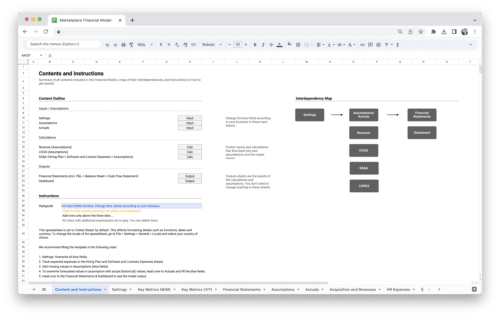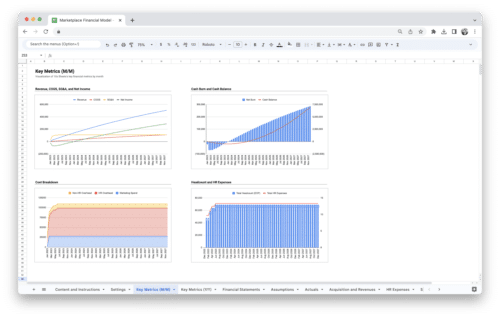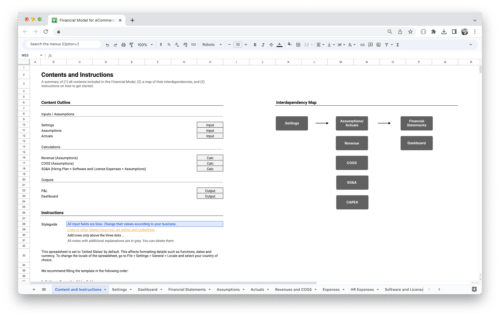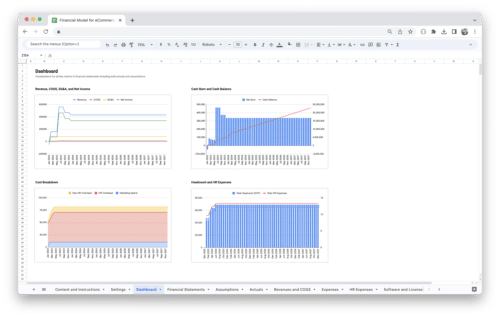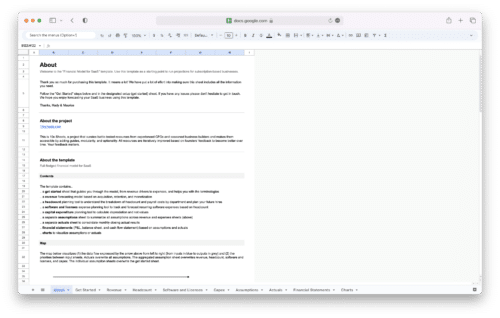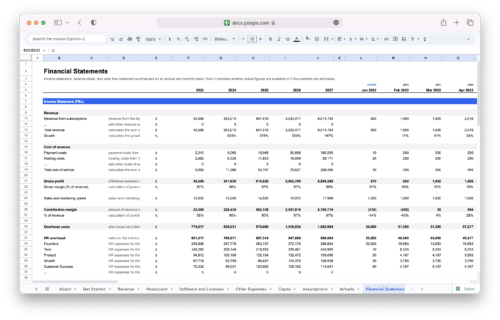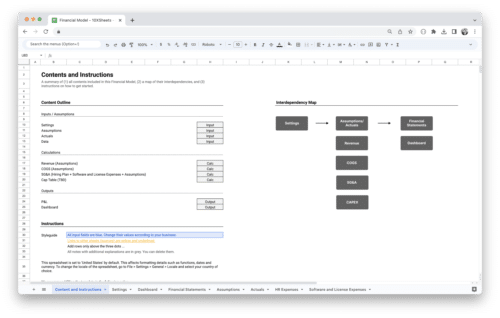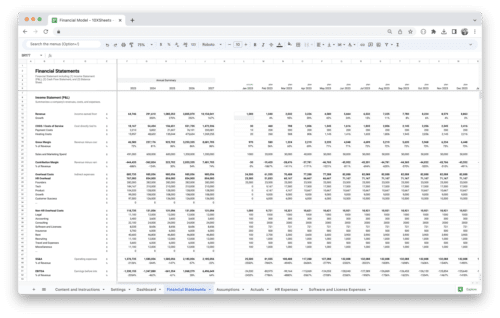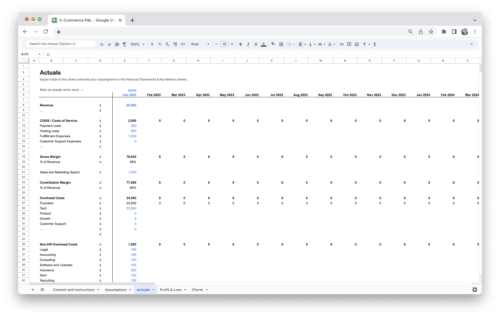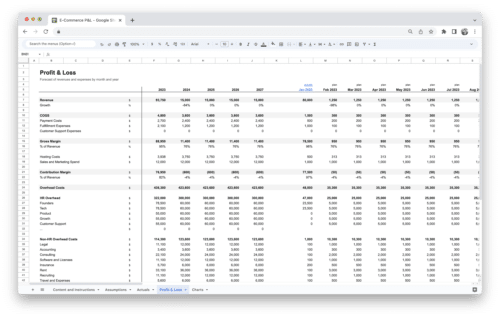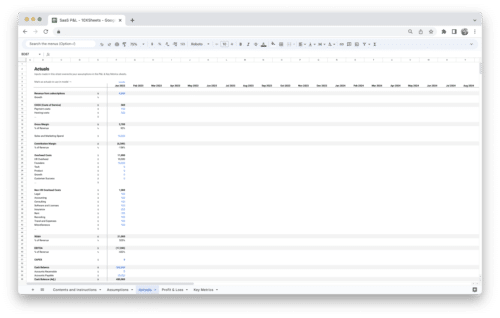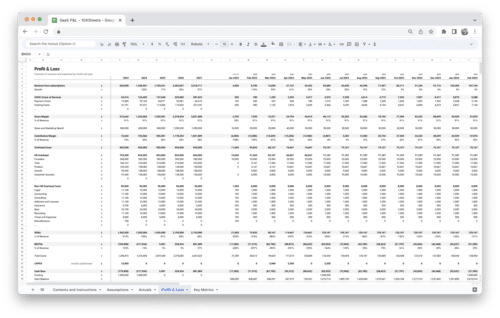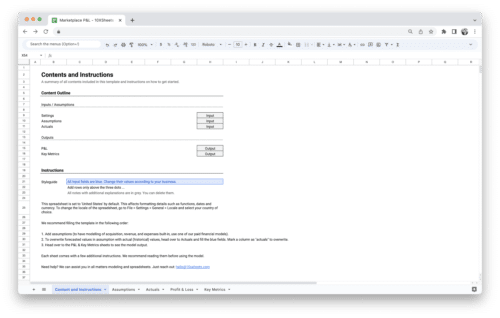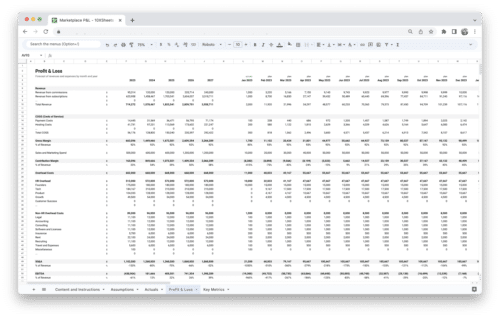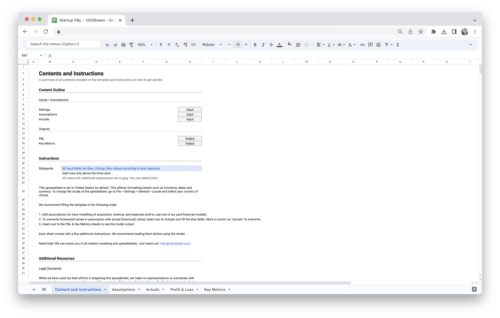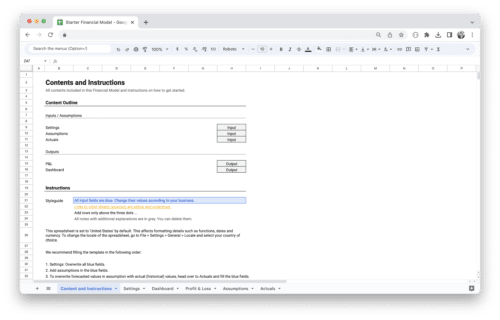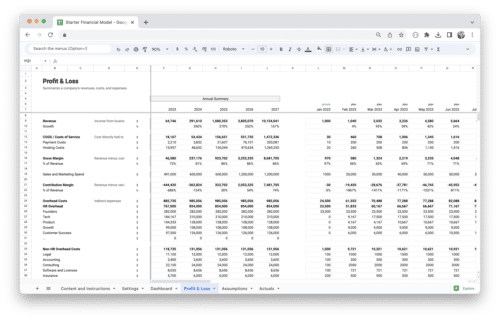- Fundamentals of Ecommerce Demand Forecasting
- Data Collection and Analysis for Demand Forecasting
- Building Accurate Ecommerce Demand Forecasting Models
- Implementing Demand Forecasting Models in Ecommerce
- Demand Forecasting in Different Ecommerce Business Scenarios
- Advanced Techniques for Ecommerce Demand Forecasting
- Best Practices and Tips for Effective Ecommerce Demand Forecasting
- Conclusion
As an ecommerce business owner or professional, understanding and effectively forecasting demand is crucial for optimizing inventory management, supply chain operations, pricing strategies, and overall business success.
In this guide, we will explore the strategies and best practices that will help you accurately predict customer demand in the ecommerce industry.
What is Ecommerce Demand Forecasting?
Ecommerce demand forecasting refers to the process of estimating future customer demand for products or services in an online retail environment. It involves analyzing historical sales data, market trends, customer behavior, and other relevant factors to make informed predictions about future demand patterns. Accurate demand forecasting enables ecommerce businesses to optimize inventory levels, avoid stockouts or overstocking, enhance customer satisfaction, and make data-driven decisions.
Benefits of Accurate Demand Forecasting
Accurate demand forecasting offers numerous benefits to ecommerce businesses:
- Improved Inventory Management: By accurately predicting demand, you can optimize inventory levels, reduce excess stock, and avoid stockouts. This leads to cost savings and improved operational efficiency.
- Enhanced Customer Satisfaction: Accurate demand forecasting helps ensure that you have the right products available when customers want them, resulting in higher customer satisfaction and repeat purchases.
- Effective Supply Chain Management: By forecasting demand accurately, you can align your supply chain operations, including procurement, production, and logistics, to meet anticipated customer demand.
- Optimized Pricing Strategies: Demand forecasting enables you to identify pricing opportunities, such as dynamic pricing or promotional strategies, based on anticipated demand fluctuations.
- Better Decision Making: Data-driven demand forecasting provides insights that inform strategic decisions related to product development, marketing campaigns, and resource allocation.
Key Challenges in Ecommerce Demand Forecasting
While demand forecasting offers significant benefits, there are several challenges that ecommerce businesses often face:
- Seasonality and Trends: Ecommerce demand is often influenced by seasonal fluctuations and changing trends. Accounting for these factors accurately can be complex and challenging.
- Limited Historical Data: New products or startups may have limited historical sales data available for accurate forecasting, making it essential to explore alternative approaches and data sources.
- External Factors: Demand can be influenced by external factors such as holidays, economic conditions, or unforeseen events. Incorporating these variables into the forecasting process is critical.
- Data Complexity: Ecommerce businesses generate vast amounts of data from multiple sources, such as sales transactions, web analytics, and market research. Managing and analyzing this data efficiently poses a challenge.
- Forecast Accuracy: Achieving high forecast accuracy is a perpetual challenge, as demand patterns can be unpredictable, and errors in forecasting can lead to costly consequences.
Fundamentals of Ecommerce Demand Forecasting
To effectively forecast ecommerce demand, it is crucial to understand the fundamental concepts and methods involved in the process.
Overview of Demand Forecasting Methods
Demand forecasting methods can be broadly categorized into qualitative and quantitative approaches:
- Qualitative Methods: These methods rely on expert opinions, market research, and subjective judgments to estimate demand. Qualitative methods are useful when historical data is limited or unreliable. They include techniques like market surveys, customer feedback, and expert panels.
- Quantitative Methods: Quantitative methods utilize historical data and statistical techniques to forecast demand. These methods are data-driven and provide more objective forecasts. Common quantitative methods include time series analysis, regression analysis, and machine learning algorithms.
Factors Influencing Ecommerce Demand
Several factors influence ecommerce demand, and considering these factors is essential for accurate forecasting:
- Seasonality and Trends: Ecommerce demand often experiences seasonal patterns, such as increased sales during holiday seasons or specific months. Understanding and accounting for these seasonal variations is critical.
- External Factors: External factors, such as economic conditions, industry trends, or changes in consumer behavior, can significantly impact ecommerce demand. These factors should be taken into account to anticipate demand fluctuations accurately.
- Internal Factors: Internal factors within an ecommerce business, such as marketing campaigns, pricing changes, or new product launches, can influence customer demand. Monitoring and incorporating these factors into the forecasting process is important.
Time Horizons in Demand Forecasting
Demand forecasting involves considering different time horizons based on the business’s specific needs:
- Short-Term Forecasting: Short-term forecasts typically cover a period of a few weeks to a few months. They are used for operational planning, inventory management, and immediate decision making.
- Medium-Term Forecasting: Medium-term forecasts typically span a few months to a year. They help in resource planning, budgeting, and identifying upcoming trends or market shifts.
- Long-Term Forecasting: Long-term forecasts extend beyond a year and are valuable for strategic planning, product development, and overall business growth strategies.
Data Collection and Analysis for Demand Forecasting
To make informed demand forecasts, ecommerce businesses need to collect relevant data and analyze it effectively.
Identifying and Collecting Relevant Data
To ensure accurate demand forecasting, it is crucial to identify and collect the right data. Here are some essential data sources to consider:
- Historical Sales Data: Historical sales data provides valuable insights into past demand patterns. It typically includes information on product sales, order quantities, dates, and customer demographics.
- Web Analytics and Customer Behavior Data: Analyzing website traffic, user behavior, and conversion rates can provide valuable information on customer preferences, purchasing patterns, and trends.
- Market Research and Industry Reports: External market research reports, industry trends, and competitor analysis can offer valuable context and benchmarks for demand forecasting.
- External Data Sources: Supplementing internal data with external sources, such as social media trends, search engine trends, and economic indicators, can enhance the accuracy of demand forecasts.
Data Preprocessing and Cleaning
Before conducting demand analysis, it is crucial to preprocess and clean the collected data to ensure its accuracy and reliability. Key steps in data preprocessing include:
- Removing Outliers: Identifying and removing data points that are significantly different from the rest of the dataset helps eliminate anomalies that can skew the analysis.
- Handling Missing Data: Addressing missing data by either imputing missing values or excluding incomplete data points ensures the integrity of the dataset.
- Data Transformation: Transforming data, such as converting dates into specific time periods or aggregating data at different levels (daily, weekly, monthly), facilitates analysis and pattern recognition.
Statistical Techniques for Demand Analysis
Various statistical techniques can be applied to analyze and model demand patterns accurately. Here are some commonly used techniques:
- Moving Averages: Moving averages smooth out short-term fluctuations by calculating the average of a specified number of preceding periods. They are useful for identifying trends and seasonality in demand data.
- Exponential Smoothing: Exponential smoothing assigns exponentially decreasing weights to past observations, giving more weight to recent data points. It is particularly useful when there is no strong seasonality in the data.
- Time Series Decomposition: Time series decomposition separates a time series into its components: trend, seasonality, and residual. This technique helps understand the underlying patterns and forecast each component individually.
- Regression Analysis: Regression analysis examines the relationship between demand and one or more independent variables, such as pricing, promotions, or marketing campaigns. It helps identify the impact of these variables on demand and make more accurate forecasts.
Building Accurate Ecommerce Demand Forecasting Models
To achieve accurate demand forecasting, ecommerce businesses need to select and implement appropriate forecasting models.
Time Series Forecasting Models
Time series forecasting models are widely used in demand forecasting due to their effectiveness in capturing trends, seasonality, and other temporal patterns. Here are some commonly used time series models:
- ARIMA (AutoRegressive Integrated Moving Average): ARIMA models combine autoregressive (AR), moving average (MA), and differencing (I) components to model and forecast time series data. They are flexible and can handle a wide range of demand patterns.
- SARIMA (Seasonal ARIMA): SARIMA models extend the ARIMA models by incorporating seasonality into the forecasting process. They are suitable for capturing and forecasting demand patterns with consistent seasonal variations.
- Prophet Model: Prophet is a state-of-the-art time series forecasting model developed by Facebook. It handles multiple seasonality, trend changes, and holidays effectively. Prophet simplifies the forecasting process while providing accurate results.
Machine Learning Models for Demand Forecasting
Machine learning models offer powerful capabilities for demand forecasting by leveraging historical data and other relevant variables. Here are some commonly used machine learning models:
- Linear Regression: Linear regression models establish a linear relationship between demand and independent variables. They are effective when there is a clear correlation between demand and factors such as pricing, promotions, or marketing spend.
- Random Forests: Random Forest models are ensemble models that combine multiple decision trees. They are effective in capturing nonlinear relationships and interactions between variables.
- Gradient Boosting: Gradient Boosting models, such as XGBoost or LightGBM, create a strong predictive model by iteratively adding weak learners. They excel at capturing complex demand patterns and achieving high forecasting accuracy.
Hybrid Approaches Combining Time Series and Machine Learning Models
In some cases, combining time series models with machine learning models can yield improved forecasting accuracy. Hybrid approaches leverage the strengths of both methodologies. For example:
- ARIMA with Exogenous Variables: By incorporating external variables (e.g., economic indicators, social media trends) as exogenous inputs to ARIMA models, you can enhance their forecasting accuracy.
- Machine Learning with Time Series Features: Machine learning models can be enhanced by incorporating time series features, such as lagged variables or moving averages, into the model as additional input features.
Implementing Demand Forecasting Models in Ecommerce
Implementing demand forecasting models involves selecting the right software and tools, training and evaluating the models, and integrating them into the ecommerce workflow.
Software and Tools for Demand Forecasting
Several software and tools are available to facilitate demand forecasting in an ecommerce context. Consider the following when choosing a solution:
- Spreadsheet Templates: Spreadsheet templates, such as Microsoft Excel or Google Sheets, can be utilized for demand forecasting. These templates provide a user-friendly interface and pre-built formulas for data analysis and forecasting, making them accessible options for businesses of all sizes.
- Ecommerce Analytics Platforms: Ecommerce analytics platforms, such as Google Analytics or Adobe Analytics, provide valuable insights into website traffic, user behavior, and conversions, enabling you to understand customer preferences and trends.
- Statistical Software: Statistical software, such as R or Python with libraries like pandas and scikit-learn, offers a wide range of tools for data analysis, modeling, and forecasting. They provide flexibility and customization options.
- Forecasting Tools: Dedicated forecasting tools, such as ForecastPro or SAP Integrated Business Planning, offer advanced forecasting capabilities, automated model selection, and visualization features specific to demand forecasting.
Model Training and Evaluation
When implementing demand forecasting models, it is essential to follow a structured approach for model training and evaluation:
- Data Splitting: Divide your historical data into training and testing sets. The training set is used to train the model, while the testing set is used to evaluate its performance.
- Model Training: Train the selected forecasting model using the training set. The model learns the patterns and relationships in the data to make predictions.
- Model Evaluation: Evaluate the trained model’s performance using the testing set. Common evaluation metrics include Mean Absolute Percentage Error (MAPE), Mean Squared Error (MSE), or tracking signals.
- Model Refinement: If the model performance is not satisfactory, refine the model by adjusting parameters, incorporating additional variables, or trying different algorithms. Iterate this process until an acceptable level of accuracy is achieved.
Combining Multiple Forecasting Models for Improved Accuracy
Ensemble methods can be employed to improve forecasting accuracy by combining predictions from multiple forecasting models. Here are two common techniques:
- Ensemble Averaging: Combine the forecasts from multiple models by averaging their predictions. This technique helps reduce the impact of individual model errors and improves overall forecast accuracy.
- Weighted Averaging: Assign weights to different models based on their historical performance or expertise. Weighted averaging gives more importance to more accurate models, enhancing the final forecast.
By implementing demand forecasting models and following these best practices, ecommerce businesses can gain valuable insights into customer demand patterns and make informed decisions.
Demand Forecasting in Different Ecommerce Business Scenarios
Demand forecasting requirements vary across different ecommerce scenarios, such as new product launches, seasonal demand fluctuations, and promotions or sales events.
New Product Launches
Launching a new product presents unique demand forecasting challenges. Here’s how you can estimate initial demand for new products and handle limited historical data:
- Market Research and Analysis: Conduct market research to understand customer needs, preferences, and competitor offerings. Analyze similar products’ demand patterns to make initial demand estimates.
- Demand Modeling: Leverage analogous products or historical sales data from similar product categories to estimate initial demand. Adjust the estimates based on factors such as product differentiation, marketing strategies, or pricing.
Seasonal Demand Fluctuations
Seasonal demand fluctuations are common in ecommerce, and forecasting accurately during these periods is crucial. Consider the following strategies:
- Historical Seasonality Analysis: Analyze historical data to identify and quantify seasonality effects. Apply appropriate seasonal adjustment techniques to account for predictable seasonal patterns.
- Promotion Planning: Align promotions, marketing campaigns, and inventory management with anticipated seasonal demand. Use historical data and market research to identify peak periods and customer buying patterns.
Demand Forecasting for Promotions and Sales Events
Promotions and sales events require careful demand forecasting to optimize inventory levels and meet customer demand effectively. Consider the following strategies:
- Promotion-specific Demand Models: Develop separate demand models for promotions and sales events. Incorporate historical data on previous promotions, discount levels, and customer response to estimate the uplift in demand accurately.
- Collaboration with Marketing and Sales Teams: Collaborate with marketing and sales teams to align promotional strategies, pricing, and inventory management. Regular communication and sharing of insights improve the accuracy of demand forecasts.
Advanced Techniques for Ecommerce Demand Forecasting
Advancements in technology and data analytics have led to the emergence of advanced techniques in ecommerce demand forecasting.
Demand Sensing and Real-Time Forecasting
Demand sensing involves capturing and analyzing real-time data from various sources, such as point-of-sale systems, social media, and online reviews, to gain immediate insights into customer demand. Real-time forecasting leverages this data to make dynamic adjustments to demand forecasts, enhancing accuracy and responsiveness.
Predictive Analytics and Machine Learning in Demand Forecasting
Predictive analytics and machine learning techniques offer powerful capabilities for demand forecasting. Here are some advanced approaches:
- Neural Networks and Deep Learning Models: Neural networks and deep learning models, such as recurrent neural networks (RNNs) or long short-term memory (LSTM) networks, can capture complex patterns in demand data and provide accurate forecasts.
- Demand Clustering and Segmentation: Use machine learning algorithms to cluster customers based on their purchasing behavior, demographics, or preferences. Segmenting customers helps in developing personalized demand forecasts and targeted marketing strategies.
Demand Forecasting as a Service (DFaaS)
Demand Forecasting as a Service (DFaaS) involves outsourcing demand forecasting to specialized providers. DFaaS providers leverage cloud-based solutions and advanced algorithms to deliver accurate demand forecasts. Benefits of DFaaS include reduced implementation time, access to expertise, and scalability.
Best Practices and Tips for Effective Ecommerce Demand Forecasting
To ensure accurate and reliable demand forecasting, ecommerce businesses should follow these best practices and tips:
- Continuously Monitor and Update Forecasts: Regularly review and update demand forecasts based on new data, market trends, and changing business conditions. Continuous monitoring helps in identifying and addressing forecast errors promptly.
- Collaborate with Sales, Marketing, and Supply Chain Teams: Foster collaboration and information-sharing between different teams involved in demand forecasting. Regular communication and cross-functional collaboration enhance the accuracy of forecasts.
- Leverage Demand-Driven Inventory Management: Implement inventory management strategies that are driven by demand forecasts. This ensures optimal inventory levels, reduces carrying costs, and minimizes stockouts or overstocking.
- Evaluate and Adjust Forecasts Based on Accuracy Metrics: Establish key performance indicators (KPIs) and regularly evaluate forecast accuracy using metrics such as MAPE or MSE. Use this feedback to refine forecasting models and improve future forecasts.
By following these best practices, ecommerce businesses can enhance their demand forecasting capabilities and drive better decision-making.
Conclusion
Accurate demand forecasting is a critical factor for success in the dynamic ecommerce industry. By understanding the fundamentals of demand forecasting, implementing appropriate models, and leveraging advanced techniques, ecommerce businesses can optimize inventory management, supply chain operations, pricing strategies, and overall decision-making.
In this comprehensive guide, we have explored the strategies and best practices involved in ecommerce demand forecasting. We have discussed various demand forecasting methods, data collection and analysis techniques, and advanced approaches. Additionally, we have examined demand forecasting in different ecommerce scenarios and future trends in the field.
Now, armed with this knowledge, it’s time to apply these insights to your own ecommerce business. Start by assessing your data collection and analysis processes, selecting suitable demand forecasting models, and implementing best practices. Continuously monitor and evaluate your forecasts, and adapt your strategies based on accuracy metrics and changing business conditions.
Remember, accurate demand forecasting empowers you to make data-driven decisions, optimize operations, and deliver exceptional customer experiences. Embrace demand forecasting as a strategic tool for growth and success in the ever-evolving ecommerce landscape.
Get Started With a Prebuilt Template!
Looking to streamline your business financial modeling process with a prebuilt customizable template? Say goodbye to the hassle of building a financial model from scratch and get started right away with one of our premium templates.
- Save time with no need to create a financial model from scratch.
- Reduce errors with prebuilt formulas and calculations.
- Customize to your needs by adding/deleting sections and adjusting formulas.
- Automatically calculate key metrics for valuable insights.
- Make informed decisions about your strategy and goals with a clear picture of your business performance and financial health.

